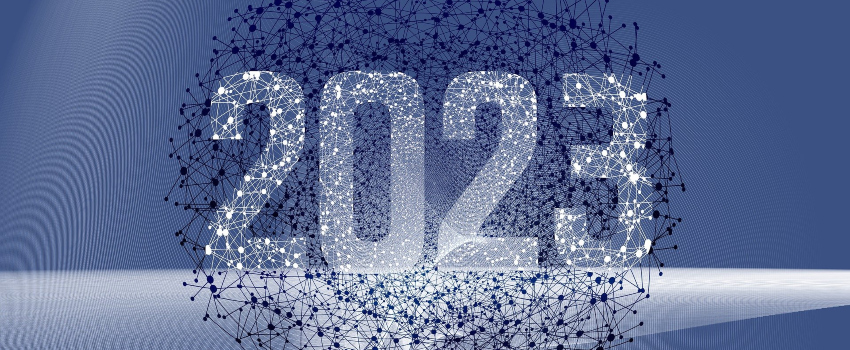
23 ITSM Tips for a Better 2023
IT service management (ITSM) is all about improvement and, if the AXELOS 2022 ITSM Benchmarking Report and survey data is correct, there’s a wealth of ITSM improvement to be had. Whether it’s related to the IT service desk or ITSM capabilities that span the breadth of IT service delivery and support. To help, this blog offers 23 ITSM improvement tips for readers to consider for 2023, with links to where more detail can be found elsewhere.
This blog by @Joe_the_IT_Guy offers 23 #ITSM improvement tips for you to consider for 2023. #servicedesk Share on X23 tips to help improve your ITSM operations and outcomes in 2023
- Make improvement a priority for 2023. But ensure that the approach focuses on business benefits rather than ITSM improvements. Improvement resources are usually scarce, so please make them count.
- Don’t try to improve too much too soon. Improvement, even with “quick wins,” can take time. It also takes focus and the ability to course-correct as needed. You’re better off starting and winning with a couple of improvement initiatives than starting and failing to realize the full potential of more. This tip shouldn’t be taken as an excuse for “heel dragging,” though.
- Ensure that your ITSM operations can demonstrate how they add value to your business. While your efficiency and effectiveness are great, the outcomes must be felt at a business and not just at an IT level.
- Assess your current ITSM performance metrics to ensure they adequately convey your business value. You won’t be alone if they only focus on the “mechanics” of your IT operations and not the outcomes.
- Learn more about experience-based measures. There’s no need to jump straight into experience level agreements (XLAs), but starting to collect experience data will make a significant difference to your understanding of how ITSM activities currently help or hinder business operations and outcomes.
- Recognize that ITSM is about people, not technology. Employee-centricity is where ITSM is heading, and the failure to recognize this harms the perceptions of IT and its value going forward.
- Take the “pulse” of your people and act on the feedback. Not only via traditional employee satisfaction surveys but also how they feel about their work and “within themselves.” Well-being issues not only harm your employees as people, but they also affect their ability to work productively.
- Commit to improving your working environment(s) based on “what matters most” to employees. Importantly, these might not be tangible additions to office space(s) but managerial “intangibles” that make a difference, such as equitable performance measurement and the provision of personal recognition when warranted.
- Invest in getting the ITSM basics right. At Service Management World 2022, Alan Nance referred to these as the “brilliant basics,” highlighting the importance of some of the “older” ITSM stuff we often take for granted.
- Aim to make more data-driven decisions. This improvement might need investment in analytics and reporting capabilities, but it also potentially requires a change in mindset.
- Don’t stand idle while your IT self-service capabilities cause end-users issues. Your IT self-service portal might be viewed as a “one and done” thing – it was deployed, and people will eventually start to use it over time. But is its use in the business’s best interest, with the time and costs IT saves (via employee self-service) potentially minimal versus the lost productivity it causes?
- Stop expecting end-users to come to you for help. There are already various ways to provide IT support closer to employees. So, rather than expecting them to call the IT service desk or find their way around your IT self-service portal, make it easier for employees to access help while working. For example, via an automation-enabled chat in Microsoft Teams.
- Seek to automate Not driven by the ability to save money but focused on improving operations and outcomes, including better experiences and freeing IT staff from the burden of high-volume, low-value tasks.
- Appreciate that artificial intelligence (AI)-enabled ITSM capabilities are already here in ITSM tools. They are no longer a “future thing.” Instead, they are increasingly part of the ITSM “business-as-usual” that improves all of operations, services, experiences, and outcomes.
- Assess and improve your ITSM knowledge management Research data shows this to be the most problematic of the commonly-adopted ITSM capabilities. At the same time, its importance is higher than ever thanks to self-help and newer AI-based capabilities such as chatbots.
- Take a unified approach to improvement that recognizes the connectivity between discrete initiatives. For example, that experience data is vital to the focus of automation investments.
- ITSM personnel should be focused on “better business” and not simply better technology. Enterprise service management is a good example of where people can elevate what they know and do beyond IT to help other business functions and the business as a whole.
- Endeavor not to share suboptimal ITSM capabilities with other business functions. Although, sometimes, the current ITSM capability might improve another business function’s operations and outcomes without the required improvement.
- Formalize your service and support practices for hybrid workers. These people are harder to support, and the quality of their IT is likely far more important to them than office-based workers.
- Recognize the importance of IT asset management (ITAM) to the quality of ITSM operations and outcomes. There might be the opportunity to do more. Industry data shows ITAM to be both an increasingly adopted discipline and also one that’s shared with other business functions via enterprise service management strategies.
- In addition to assessing the health of your people and processes, don’t overlook the suitability of your ITSM tool. Is it holding your ITSM capabilities back, incurring additional effort or costs, or causing other issues that ultimately affect business operations and outcomes adversely?
- If you haven’t done so already, check out the changes in ITIL 4. As with previous versions of ITIL, you can take what’s helpful and take a pass on the rest. Importantly, it’s an opportunity to sense-check whether your ITSM capabilities have sufficiently changed with the times and to adopt new thinking and approaches when beneficial.
- Aim to attend an ITSM event in 2023. After the last few years we’ve all had, it’s likely just what you need to reinvigorate your passion for improvement. There’ll be many opportunities to inform your ITSM growth – such as attending success-focused educational sessions, networking with peers, and seeing innovations from ITSM tool vendors.
There’s a lot to take in here. Some people might argue that there’s too much. However, I think little in these tips is undeserving of your attention in 2023. Your end-users expect better service and support, and I’d be willing to bet that your business demands it.
Recommended reading:






